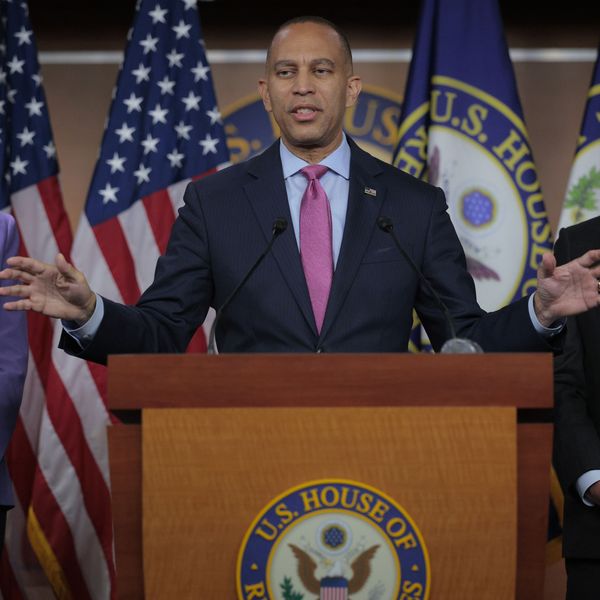Climate change is melting the glaciers in iconic Glacier National Park, according to scientists, who warn that the majestic natural formations could disappear entirely within our lifetime.
The park, which celebrated its 107th anniversary on Thursday, boasted 150 glaciers in the late 19th century; today, only 26 meet the 25-acre threshold to be considered glaciers.
That's according to U.S. Geological Survey (USGS) data released Wednesday, which finds that as global temperatures have increased, the park's major "named" glaciers have shrunk by an average of 39 percent--and some by as much as 85 percent--since 1966. While the loss in Montana "is more severe than some other places in the U.S., it is in line with trends that have been happening on a global scale," said Portland State University geologist Andrew G. Fountain, who partnered with the USGS on the multi-year study.
In addition to decimating Glacier's namesake attractions, "[t]he park-wide loss of ice can have ecological effects on aquatic species by changing stream water volume, water temperature, and run-off timing in the higher elevations of the park," said lead USGS scientist Dr. Daniel Fagre.
What's more, the Guardian reported, "[t]he disappearance of glaciers in Montana is part of a broader loss that will see all glaciers [...] largely vanish from the lower 48 states of America by the mid point of the century," according to Farge.
"It's inevitable that we will lose them all over the next few decades," Farge told the Guardian. "The Colorado glaciers started melting before Montana's and while there are larger glaciers in the Pacific northwest that will hold on longer, the number vanishing will steadily grow until none are left."


